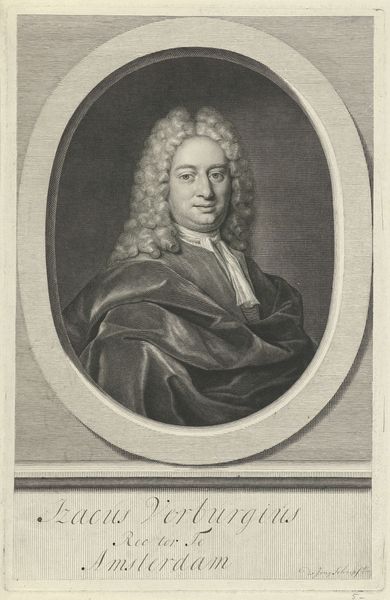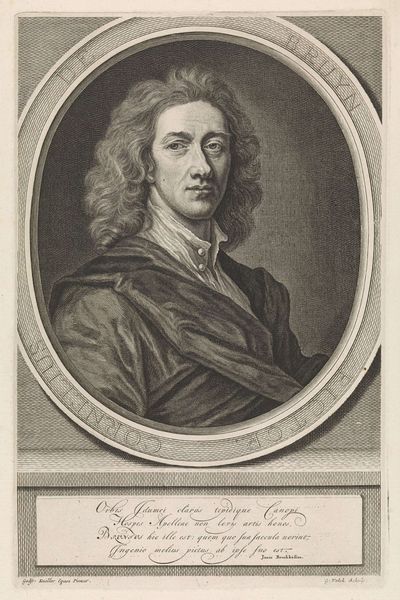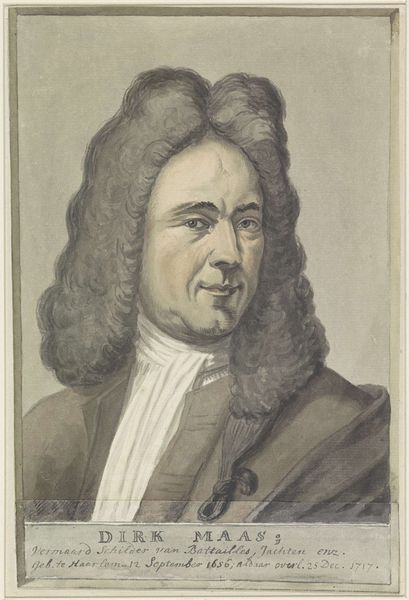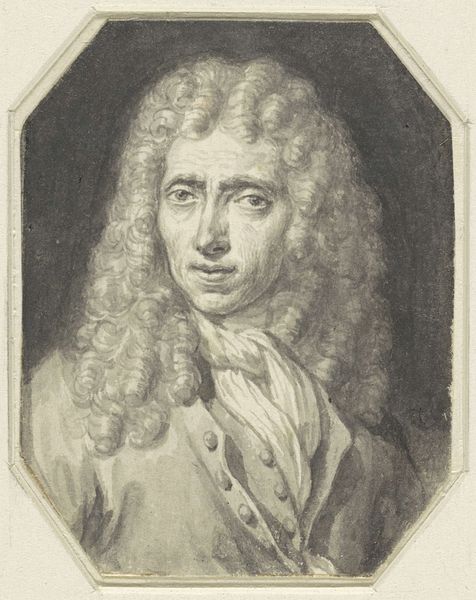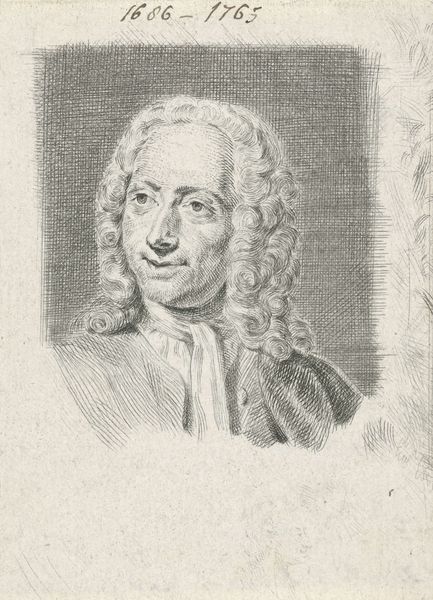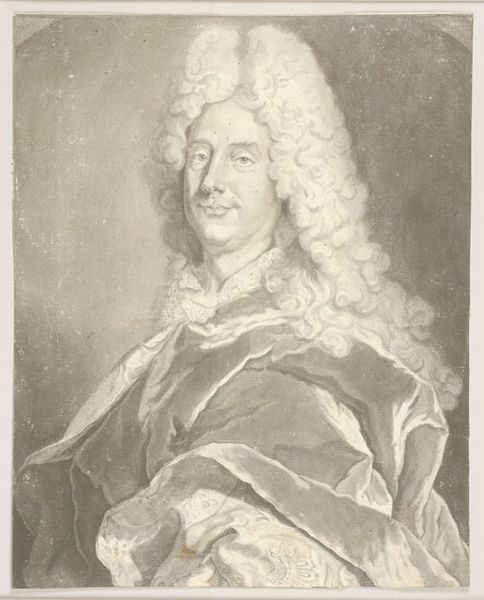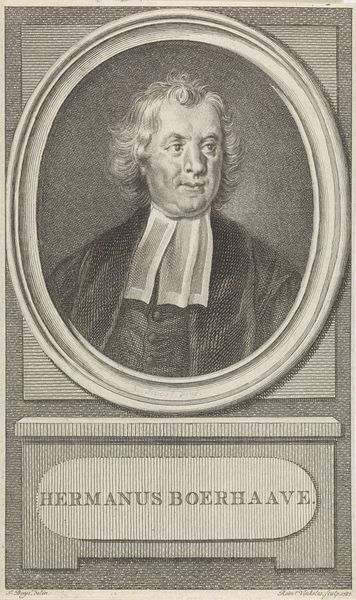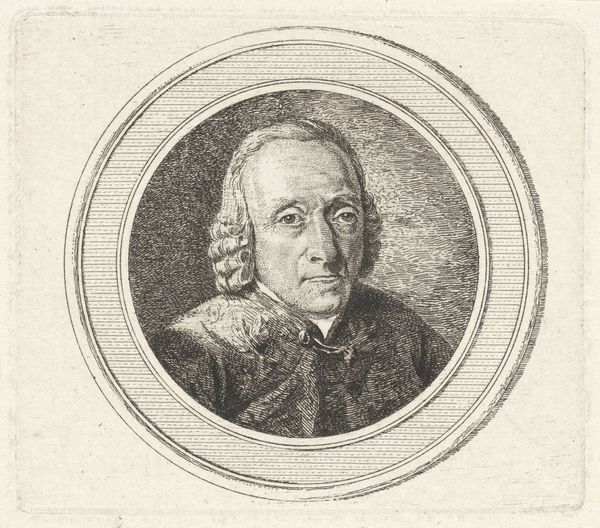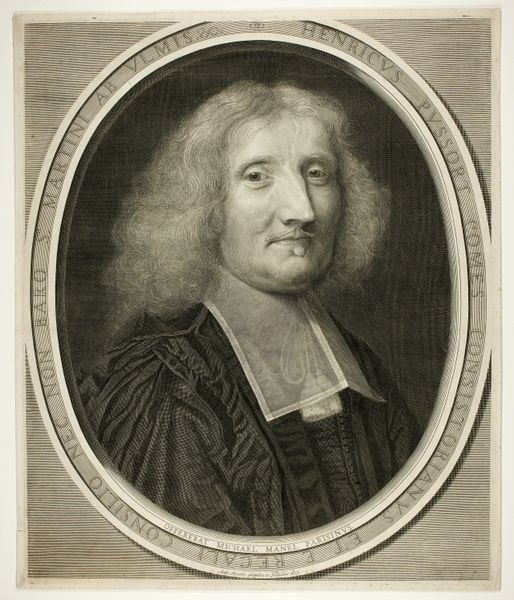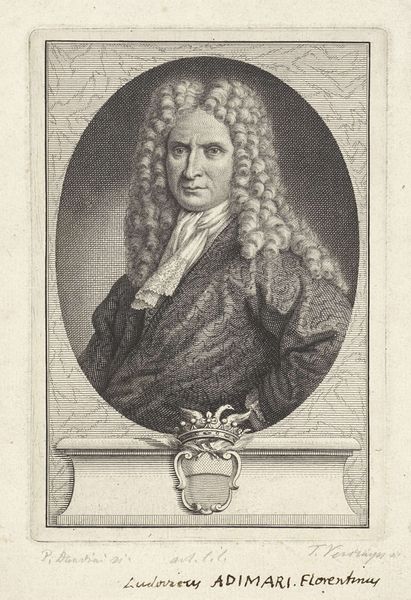
#
portrait
#
neoclacissism
# print
#
history-painting
Dimensions: 196 mm (height) x 143 mm (width) (bladmaal)
Editor: Here we have Christen Købke's 1841 print, "Ludvig Holberg," residing here at the SMK. I'm immediately struck by its crispness. The engraving is so precise. What can you tell me about it from a formalist perspective? Curator: Observe how the artist renders form through a calculated orchestration of line and tone. The face, illuminated from an unseen source, emerges from the subtle gradations achieved via delicate cross-hatching. Do you notice how Købke uses the circular vignette as a compositional device, effectively focusing the viewer's gaze on Holberg's countenance? Editor: Yes, the roundness definitely keeps me locked into the face. It seems to lack any embellishment that might distract from a pure rendering of the person. Why choose printmaking as opposed to painting to depict a historical figure? Curator: Consider the implications of reproductive media. Printmaking allows for dissemination, democratizing access to Holberg's image. Note how Købke meticulously captures the texture of Holberg's wig, yet abstracts the background into pure tone. He emphasizes texture in Holberg and flatness of the background as essential contrasts. Editor: I hadn’t thought about it that way before, it almost makes this feel more contemporary now, since we are so use to reproducible works. Thanks for pointing out how form influences how we see history. Curator: And consider the interplay between positive and negative space—the dance between what is rendered and what is left intentionally blank, inviting the viewer’s eye to complete the form. Visual art provides visual and tactile contrast.
Comments
No comments
Be the first to comment and join the conversation on the ultimate creative platform.
